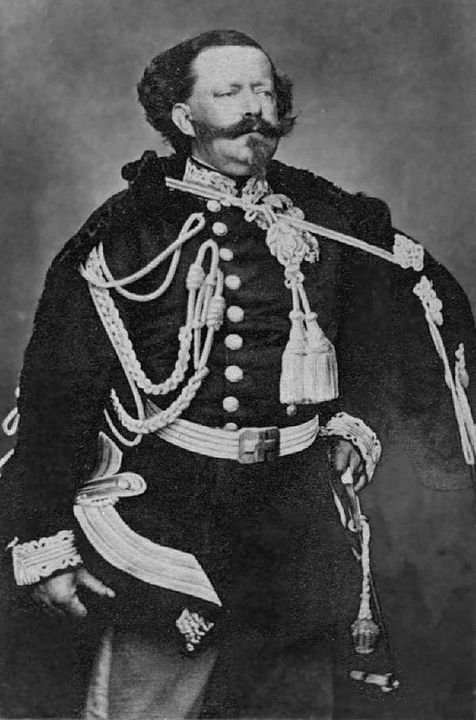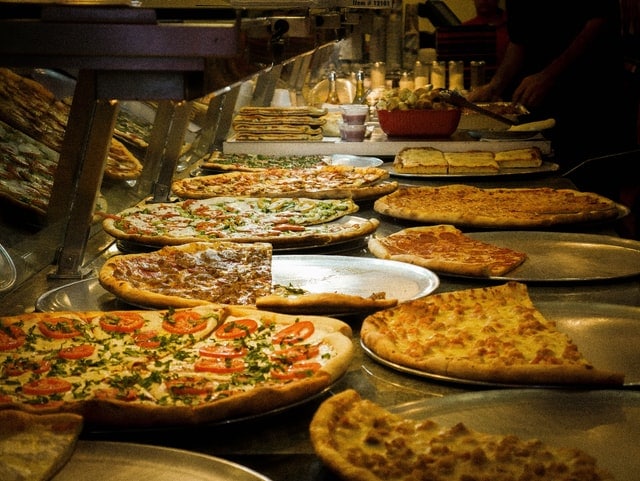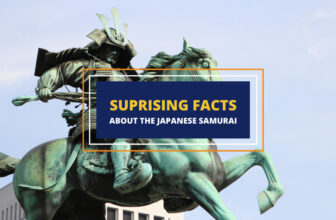
Table of Contents
Today pizza is a world-renowned fast-food classic, but this wasn’t always the case. Despite what some people might think, pizza has been around for at least four centuries. This article reviews the history of pizza, from its Italian origins as a traditional Neapolitan dish to the American boom from the mid-1940s that took pizza to almost every corner of the world.
An Accessible Food for the Poor

Several civilizations from the Mediterranean Sea, like the Egyptians, Greeks, and Romans, were already preparing flatbreads with toppings in ancient times. However, it wasn’t until the 18th century that the recipe for modern pizza appeared in Italy, specifically in Naples.
By the early 1700s, Naples, a relatively independent kingdom, was the home of thousands of poor laborers, known as lazzaroni, who lived in modest one-room houses scattered across the Neapolitan coast. These were the poorest of the poor.
These Neapolitan workers couldn’t afford expensive food, and their lifestyle also meant that dishes that could be quickly prepared were ideal, two factors that probably contributed to the popularization of pizza in this part of Italy.
Pizzas eaten by the Lazzaroni already featured the traditional garnishes that are so well-known in the present: cheese, garlic, tomato, and anchovies.
King Victor Emmanuel’s Legendary Visit to Naples

Pizza was already a traditional Neapolitan dish by the turn of the 19th century, but it was still not considered a symbol of Italian identity. The reason for this is simple:
There was no such thing as a unified Italy still. This was a region of many states and factions.
Between 1800 and 1860, the Italian Peninsula was formed by a group of kingdoms that shared language and other key cultural features but didn’t identify themselves as a unified state yet. Moreover, in many cases, these kingdoms were ruled by foreign monarchies, such as the French and the Spanish branch of the Bourbons, and the Austrian Habsburgs. But after the Napoleonic Wars (1803-1815), ideas of freedom and self-determination reached Italian soil, thus paving the way for the unification of Italy under one Italian king.
The unification of Italy finally came in 1861, with the rise of King Victor Emmanuel II, of House Savoy, as the ruler of the newly created Kingdom of Italy. Over the next few decades, the characterization of Italian culture would be deeply intertwined with the history of its monarchy, something that gave place to many stories and legends.
In one of these legends, King Victor and his wife, Queen Margherita, supposedly discovered pizza while visiting Naples in 1889. According to the story, at some point during their Neapolitan stay, the royal couple became bored of the fancy French cuisine that they ate and asked for an assortment of local pizzas from the city’s Pizzeria Brandi (a restaurant first founded in 1760, under the name of Da Pietro pizzeria).
It’s worth noticing that from all the variety they tried, Queen Margherita’s favorite was a type of pizza topped with tomatoes, cheese, and green basil. Furthermore, legend has it that from this point onward, this particular combination of toppings became known as pizza margherita.
But, despite the royal couple’s culinary approval of this treat, pizza would have to wait another century and a half to become the world phenomenon that it is today. We’ll have to travel across the Atlantic and into the 20th-century US to know how that happened.
Who Introduced Pizza to the US?

During the Second Industrial Revolution, many European and Chinese workers traveled to America looking for jobs and the opportunity to start over. However, this search didn’t mean that these immigrants cut all their ties with their country of origin when they left. Quite the contrary, many of them tried to adapt elements of their culture to the American taste, and, at least in the case of the Italian pizza, this attempt widely succeeded.
Tradition has often credited Italian Gennaro Lombardi as the founder of the first pizzeria ever opened in the US: Lombardi’s. But this doesn’t seem to be quite accurate.
Reportedly, Lombardi obtained his commercial license to start selling pizzas in 1905 (even though there is no evidence confirming this permit’s emission). Moreover, pizza historian Peter Regas suggests that this historical account be revised, as some incongruences affect its potential veracity. For instance, Lombardi was only 18 years old in 1905, so if he really joined the pizza business at that age, it’s far more possible that he did it as an employee and not as the owner of the pizzeria that would eventually bear his name.
Furthermore, if Lombardi began his career working in someone else’s pizzeria, he couldn’t be the person who introduced pizza to the US. This is exactly the point made by Regas, whose recent discoveries have brought light on a matter long thought to be settled. Looking through New York’s historical records, Regas found out that by 1900 Fillipo Milone, another Italian immigrant, had already founded at least six different pizzerias in Manhattan; three of which became famous and are still in operation today.
But how is it that the true pioneer of pizza in America has none of his pizzerias named after him?
Well, the answer seems to rely on the way Milone did business. Apparently, despite having introduced pizza into the US, Malone didn’t have any heirs. Subsequently, when he died in 1924, his pizzerias were renamed by those who bought them.
Pizza Becomes a World Phenomenon

Italians kept opening pizzerias in the suburbs of New York, Boston, and New Haven throughout the first four decades of the 20th century. However, its main clients were Italians, and therefore, pizza continued to be considered an ‘ethnic’ treat for a while longer in the US. But, after the end of World War II, the American troops that were stationed in Italy brought home the news of a delicious, easily made dish that they had discovered during their time overseas.
The word spread fast, and soon enough, the demand for pizza began to increase among Americans. This variation of the American diet didn’t go unnoticed and was commented on by several high-profile newspapers, such as the New York Times, which in 1947 announced that “pizza could be as popular a snack as the hamburger if Americans only knew about it.” This culinary prophecy would prove true during the second half of the 20th century.
In time, American variations of pizza and American food chains dedicated to pizza, such as Domino’s or Papa John’s, also began to appear. Today, pizza restaurants such as the ones mentioned before function in more than 60 countries around the world.
In Conclusion
Pizza is one of the most popular foods that consumed in today’s world. Still, while many people associate pizza with the American fast-food chains that are present around the globe, the truth is that this treat originally comes from Naples, Italy. As with many popular dishes today, pizza originated as a “poor man’s food’, made quickly and easily with a few staple ingredients.
But pizza didn’t become the all-time favorite of Americans for another five decades. After World War II, this trend began with the American soldiers who discovered pizza while stationed in Italy, and then kept the craving for this food once they were home.
From the mid-1940s onward, the increasing popularity of pizza led to the development of several American fast-food chains dedicated to pizza in the US. Today, American pizza restaurants, like Domino’s or Papa John’s, function in at least 60 countries around the globe.








